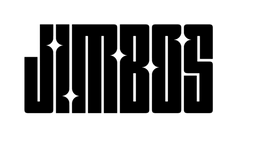The Role of Scent in Professional Interior Detailing
A car can look perfectly clean, but if it smells bad — it still feels dirty. Scent plays a massive role in how customers and drivers perceive cleanliness. In this guide, we’ll break down how to use scent strategically in interior detailing to create a professional, lasting impression.
Estimated Reading Time: ~8 minutes
Why Scent Matters in Detailing
Our sense of smell is directly tied to emotion and memory. When a freshly detailed car smells clean, it reinforces the visual result — it feels newer, fresher, and more inviting. That’s why professional detailers use clean, consistent scents as part of their finishing process.
- → Scent influences perceived cleanliness
- → Pleasant smells improve customer satisfaction
- → Consistency builds brand recognition for pros
The Two Sides of Interior Scent Management
There are two approaches to interior scent control in detailing:
- Odor removal – eliminating existing smells like smoke, food, or mildew.
- Odor enhancement – adding a light, pleasant fragrance after cleaning.
Both are essential for creating that “freshly detailed” experience that customers associate with quality work.
Step 1: Remove Odors at the Source
Never try to mask bad smells — always remove the source first. Use Complete Cabin Cleaner to clean fabric, leather, and plastic surfaces where odor-causing bacteria thrive. It neutralizes organic smells rather than covering them.
→ Pay special attention to carpets, seat bottoms, and HVAC vents.
Step 2: Choose the Right Air Freshener
Once the cabin is clean, add a subtle, professional-grade scent that complements your brand. Harsh or overly sweet fragrances can turn customers off. Instead, aim for light, fresh, or citrus-based profiles that signal “clean.”
Jimbo’s Detailing Air Freshies deliver a balanced citrus scent that refreshes interiors without overwhelming the senses.
Complete the Detail with a Fresh Scent
Air Freshies from Jimbo’s Detailing add a light, clean citrus finish that completes any professional detail.
Shop Air Freshies Buy on AmazonStep 3: Don’t Overdo It
Less is more when it comes to scent. Customers should notice freshness, not fragrance. Over-saturating an interior can lead to headaches, irritation, or a “fake clean” feeling — the opposite of your goal.
Step 4: Combine Odor Elimination and Scent Layering
The best approach blends both techniques: neutralize first, then lightly enhance. For example, clean with Complete Cabin Cleaner to remove trapped odors, then add a hanging Air Freshie or misted spray to maintain freshness for days.
Scent and Customer Perception Comparison
| Scent Approach | Customer Reaction | Longevity | Professional Appeal |
|---|---|---|---|
| Masking Only (Heavy Fragrance) | Mixed or negative | Short | ❌ Low |
| Odor Removal Only | Clean but bland | Medium | ⚠️ Moderate |
| Odor Removal + Scent Layering | Positive, long-lasting | Long | ✅ Professional |
Set the Tone with Every Detail
Add a signature scent to every car you clean — it’s the easiest way to make your detailing work memorable.
Shop Air Freshies Buy on AmazonStep 5: Match Scent Strength to Vehicle Type
Different vehicles and customer types call for different scent intensity. Here’s a quick guideline:
- → Daily drivers: Subtle, clean citrus or fresh linen
- → Luxury vehicles: Light leather or new car scent
- → Fleet or rideshare: Consistent, mild fragrance for every car
Pro Tips for Using Scent in Detailing
- → Always clean thoroughly before applying fragrance.
- → Replace air fresheners every 2–3 weeks for consistency.
- → Avoid spraying directly on fabric or vents — mist into air instead.
- → Match scent with branding for business consistency.
- → Don’t mix multiple scent types — keep it simple.
Related Reading
- Interior Odor Removal: The Real Cause and Fix
- How to Detail Rideshare or Fleet Vehicles Efficiently
- How to Keep Interiors Cleaner Longer
- How to Set Up an Interior Detailing Kit
- Pro Tips for Customer-Ready Interiors That “Feel” Detailed
FAQs
Why does scent matter in car detailing?
Scent enhances perceived cleanliness and creates an emotional connection. A car that smells clean feels cleaner to customers.
What’s the best scent for professional detailing?
Clean, subtle fragrances like citrus or linen work best. Avoid overpowering or artificial-smelling options.
Can I just use air freshener instead of cleaning?
No — scent should enhance, not replace cleaning. Always remove the odor source first using Complete Cabin Cleaner.
How long do air fresheners typically last?
Most last 2–3 weeks depending on climate and air circulation. Replacing regularly keeps interiors smelling consistent.
Should I use different scents for different clients?
You can, but keeping a consistent “signature scent” helps brand your detailing business and build recognition.



